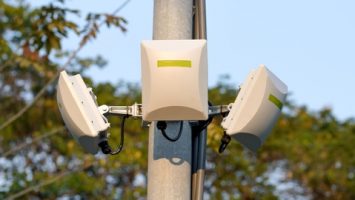
Working in partnership, Hitachi Europe Ltd., Mitsubishi Motors and ENGIE are exploring the potential for electric vehicles to act as a means of energy storage for an office building. For the experiment, Hitachi’s vehicle-to-everything (V2X) charger was connected to ENGIE’s office building in Zaandam, Netherlands. The V2X Charger is capable of not only recharging an electric car but it can also discharge the energy back into the building/grid. It also makes it possible to connect solar panels and external storage directly to the recharger, allowing a more efficient electricity supply to buildings. When the building generates more solar power than it needs the excess energy can be stored in the battery of the electric car and can then be discharged back into the grid. The car battery therefore acts as an energy storage source, as well as an emergency power supply.
“This charger exceeds smart charging as we know it and is basically the first real ‘smart grid charger’,” said Hans Boot, chief operating officer at ENGIE Services Netherlands. “We hope to begin installing this system for all companies who are eager to take the next step towards becoming truly energy-neutral.”
In the next stage of the pilot project, the companies plan to demonstrate how EVs, renewable energy, and building energy management systems can work together to enable buildings to become energy neutral, thereby reducing emissions and cutting costs.
Ram Ramachander, Chief Digital Officer at Hitachi Europe, said, “This project demonstrates how our IoT and digital capabilities can help customers make buildings energy-neutral, increasing their energy efficiency and reducing costs, by optimizing EV charging infrastructure. Our technology can also help to create new business cases across the EV value chain, including vehicle to grid technology, which enables flexibility with their energy distribution.”


